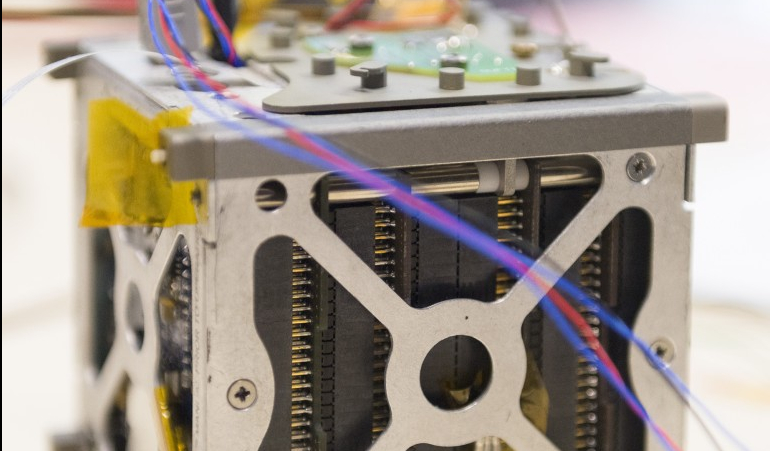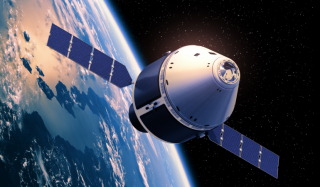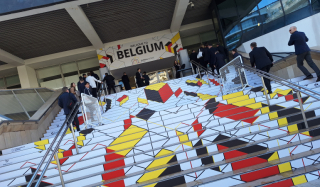
At the end of April, the rocket Soyuz took off into space from Kourou in French Guiana, taking Oufti-1, the first Belgian nanosatellite, with it.
After three false starts (thanks to the weather and a technical fault), the rocket was finally launched, taking with it three Cubesats (cube-shaped nanosatellites). Among them was Oufti-1, created by students at the University of Liège (ULg) and several technical colleges in the Liège region as part of the “Fly your satellite” programme created by ESA (European Space Agency) to encourage careers in science. Its first six signals were received in the 24 hours following take-off.
Oufti-1 (Orbital Utility for Telecommunication Innovations) measures 10 cm along each side and weighs barely a kilogram. Covered in cutting-edge technology, it has two missions: to act as a relay point in space for radio amateurs using the D-STAR digital telecommunication system, and to test new high-output solar panels. Oufti-1 is designed to have a working life of around two years.
The idea to build a Cubesat in Liège originated in a phone call in 2007 between Luc Halbach, radio amateur and engineer at Spacebel, and Professor Jacques Verly from the Faculty of Applied Sciences at Liège University (Department of Electricity, Electronics and Information Technology or Montefiore Institute, Signal and Image Laboratory), also a radio amateur. They were soon joined by Professor Gaëtan Kerschen (Department of Aerospace and Aeromechanics). At this time, radio amateurs were beginning to use a sophisticated digital telecommunication system called D-STAR, but the system had no relay satellites, despite their potential usefulness to a mainly terrestrial system. Providing one of these satellite relay points for D-STAR is one of Oufti-1’s missions.
The nanosatellite is therefore an educational tool, bringing together students from ULg and technical colleges across the Liège province. In eight and a half years – and still going strong – the project has welcomed dozens of students, and been the subject of no fewer than 45 final-year dissertations. The component parts of the satellite were designed and assembled by students before undergoing rigorous testing at the Liège Space Centre (CSL) at ULg at the European Space Research and Technology Centre (ESTEC) at the European Space Agency (ESA).
(Source: ULg)







